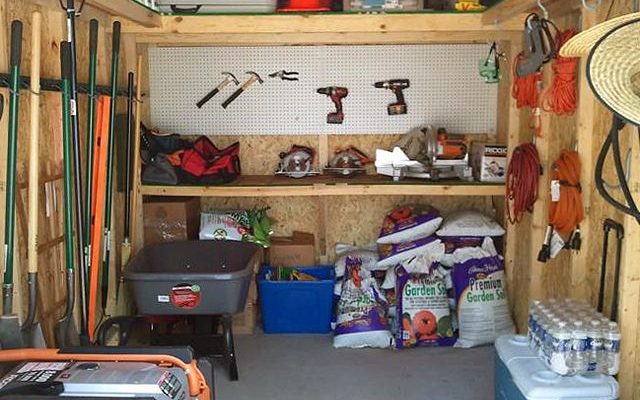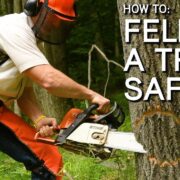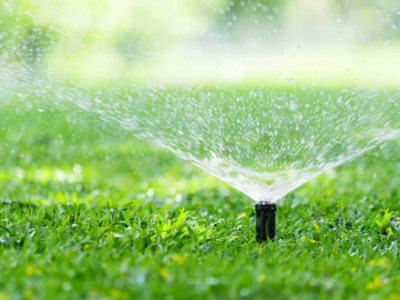I think it’s safe to say that most people’s least favourite part about gardening is keeping a handle on all of your tools and equipment. We are constantly misplacing things that we need due to lack of organization.
And look, it’s a thing that happens with most hobbies that require as many tools as gardening does. It’s a hobby at the end of the day, it’s meant to be fun and the fun part is the actual gardening itself.
The fun part is discovering new plants, preparing your garden for them, actually planting, and then maintaining said plants so that you can watch them grow. Tidying up afterward is just a chore.
But it’s a necessary chore, and if you put everything back in order after you’re finished then the next time you head out into the garden you will be able to jump right into the work without having to worry about not knowing where anything is.
And you can make things easier on yourself if your shed is well set up for effective tool placement. So let’s have a look at a few ways to make sure this is the case:
Install Shelves
Having shelves in your shed will change your life. This is what you will use for all of the smaller stuff. So we’re talking about seed packets, gloves, trowels, and small spades. Also, pots that you aren’t currently using can go on shelves too.
This is a basic idea, but it’s an extremely effective one and if you are purchasing a shed for your garden that you intend to use for your gardening equipment, there is unlikely to actually be shelves inside it.
Without them, you are going to find yourself just tossing everything inside or stacking things on top of each other. It’s actually quite difficult not to because you don’t have any other options and that just leads to disorganization.
I would suggest that you build these shelves yourself. It’s the best way to ensure that you have as much shelf space as you need and it gives you complete control over where you put them and how you position them.
It’s not that big of a job, you should be able to get it done in the space of a weekend or two, and it might just get you interested in DIY. These are two hobbies that have a lot of similarities, but if not, it will at least ensure you have proper shelf space.
Utilize the Ceiling
Do you know what’s a scary thought? Stepping into our shed and seeing the pot you need at the back on a shelf, and then walking forward without realizing that there is a coiled-up hose on the floor.
Your trip on that hose and you’re going down. And you might have a rake or a vaccum in that shed so you do the math as to what could happen to your face. Hoses and cords go with the territory when it comes to gardening, and they can be dangerous.
They take up so much space and they don’t really fit on shelves so usually the easiest place to store them is on the floor. But not only will that be a potential hazard, they will also get all tangled up with each other and untangling will be a nightmare.
So where else can you put them? The ceiling could be a solution for you here. You could get yourself some hooks which you can screw into the boards of the ceiling, and then you can hang up the coils.
It will depend on how large your shed actually is and in some very small sheds they could just end up hanging down in very irritating fashion, but if you roll them tightly enough this shouldn’t be a problem.
Exterior Wall Hangings
Inside your shed isn’t the only place that is useful for storage, you’ve got four walls out there that you can also put to great use. If you simply hang a rack towards the roof, you can line up some of your tools on it.
The rack shouldn’t be too difficult to come by, you can probably buy one at any hardware store and it might not even be too difficult to make one of these yourself. But it will be a great addition because some of the most important tools are quite large.
When you’ve got a shovel, a leaf rake and a garden, a digging fork and an edging spade, plus maybe a yard brush for some cleanup, that’s a lot of long handled tools which you will struggle to fit into your shed.
At best, you would end up standing them up in a corner or against a wall where they are likely to fall, but if you hang them on the outside then not only is it neat, but it also means that you have easy access to them without having to go into the shed itself.
This is just making things a little easier by thinking outside the box. Or thinking outside the shed rather.
Avoid Clutter
If you’ve already got a gardening shed, have the stuff you’ve got in there are things that you probably don’t even really need. Do a little bit of an inventory of the contents of the shed so you can cut this problem down to size.
See if you have numerous types of the same tool. It’s always good to have a spare or two in case one breaks or gets lost, but if you have six trowels and half of them are in no condition to be used, throw them out.
And if you have a lot of the same tool and they are still functional, give them away or sell them. Keep clear of gimmicky tools too, things which seem like they are going to be useful but which will just end up gathering dust.
If you like using modern gadgets when gardening that’s fine, but stick to reputable ones. Things like soil moisture meters, which actually serve a good purpose and which you can find a lot of information about online if you research.
Also, don’t overbuy seeds or fertilizer. Get enough to last you for a couple of months at most, otherwise you will just have a mountain of stuff to navigate around every time you walk into your shed.
Staying organized is difficult, and it’s an effort which you’re probably not going to be in the mood for after you’ve finished a gardening session, but it will amount to less work in the long run.










Comments